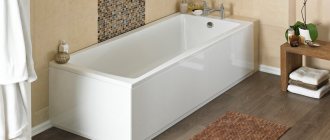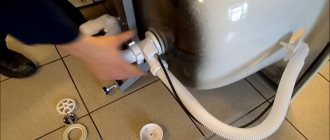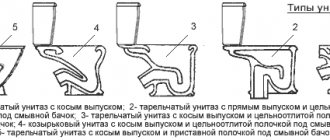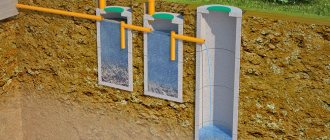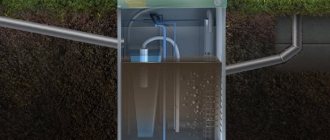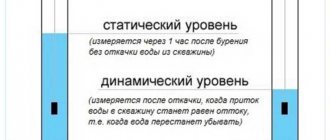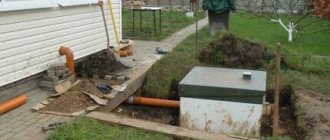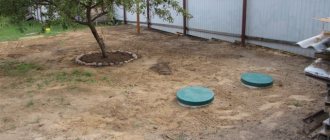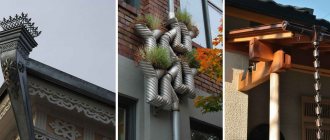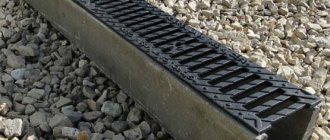High humidity and poor ventilation lead to mold on bathrobes, towels and bathroom trim. To dry things and air in the room, you can use a heated towel rail - a device that is connected to the mains or water coolant.
Most often, the device is installed in a hot water supply or heating riser, so in order to avoid accidents, you must strictly follow the rules for installing a heated towel rail.
Principle of operation
A heated towel rail is a heating tubular structure that is attached to the wall or installed on the floor. The heat source can be hot water from the domestic hot water system or an electric heating element.
When connected to a water pipeline, the operation of the dryer depends entirely on the operating mode of the system. Unlike water ones, electric heated towel rails are autonomous and can be used regardless of the time of year or the availability of hot water supply.
Design features of coils
Just 5-7 years ago, hardware stores did not have such an assortment of fasteners for radiators, so the holder was a simple metal hook fixed in the wall.
Unfortunately, such installation could not boast of reliability. In today's realities, the optimal fastening element is brackets
. They consist of the following elements:
- Mounting shelf ( nameplate with holes for self-tapping screws)
– at the base of the coil there is a special shelf, directly from which mounting to the wall is carried out (for example, with self-tapping screws on a tile). For maximum reliable fixation, 2 self-tapping screws are driven into each shelf. - Leg for the shelf
- on one side the leg has a ring for fixing the heated towel rail, and the other side is firmly connected to the fastening shelf. The height of the leg is no more than 5 cm and this is enough to firmly secure the heated towel rail to the wall. In rare cases (especially for a small bathtub), you can choose a mount with a telescopic leg, which can be shortened or lengthened. - Fixation ring
– the ring is fixed on the device pipe to prevent play.
Heavy coils and designer models require additional wall mounting points to distribute the weight evenly. Fastening elements can be 28, 32, 38 mm and depend on the diameter of the pipe.
Connection diagram requirements
If there are no problems connecting electric towel dryers, they are simply plugged into an outlet, but for water structures there are certain restrictions:
- it is advisable to place the device closer to the heating riser and make the outlets as straight as possible, without bends or loops;
- You cannot place a shut-off valve on the main pipe;
- do not narrow the bends so as not to increase the hydraulic resistance of the radiator;
- install a bypass between the outlets - a jumper that preserves the possibility of coolant circulation when the heated towel rail is turned off;
- the diameters of bends and valves should not be less than the cross-section of the inputs on the device.
If any of these conditions are not met, the dryer may not operate efficiently. You will need to reinstall it or connect a pump for forced circulation of the coolant.
Selecting a drying device by type of mechanism
Today, manufacturers of heated towel rails offer three devices that differ in power source:
- hot water supply: the heated towel rail works all year round, however, there are interruptions when maintenance is carried out; Air pockets often form in pipes, hard water salts settle on the walls of pipes, reducing the diameter;
- central heating system: the device only works during the heating season, which is unprofitable, because most of the year the heated towel rail plays the role of an ordinary towel rack;
- electricity: new models powered by electric current are more functional; They are easy to install; you just need to attach them to the wall and plug them into a power outlet.
There is a fourth type - this is a combined device that can operate both from electricity and from a heating system or hot water supply.
To make such a radiator (regardless of the operating principle), several metals are used:
- stainless steel;
- brass;
- copper;
- black steel with added nickel plating.
On the domestic market you are more likely to find stainless steel products with a chrome finish. However, if you decide to make a heated towel rail with your own hands, it is better to use brass or copper, that is, non-ferrous metals.
Experienced professionals in home construction do not use black steel, since its service life is short, rust will quickly overcome the drying device, just like stainless steel - the material is susceptible to corrosion.
It is worth noting how practical the choice of a combination drying device will be. In cold weather, you can use the heating system, and in the summer, electricity. As reviews note, finding such a device is quite difficult, but making it yourself is easy.
This heated towel rail will always keep your towels warm
Installation diagrams
Depending on the layout of the bathroom and the design features of the heated towel rail, 3 connection methods are used:
- side;
- diagonal;
- lower.
Side connection
A heated towel rail with a side connection without displacement or narrowing of the bypass works well in any direction of coolant supply. In this case, a slight reverse slope must be observed in the connections to drain water back into the system.
With a side connection, there is no need to bleed air at the top of the dryer, since there is no area for it to accumulate. Maximum efficiency. An important condition is that the diameters of the bends must be no less than the cross-section of the PS pipes.
Diagonal connection
Just as with a lateral connection, the direction of movement of the coolant can be any. Due to the fact that there is a pressure difference between the upper and lower outlets, hot water circulates freely.
The air in the dryer does not form a plug, so there is no need to bleed it out. Shut-off valves are installed on the branches; in this case, the riser serves as a bypass.
Bottom connection
With this scheme, the efficiency is slightly lower than with a lateral or diagonal one, but there are certain advantages. The hot water supply can be hidden under the floor, and in order not to pull pipes along the walls, the heated towel rail is connected from below.
The bends can be installed even close to each other. This does not affect the operation of the dryer. But they must be located no higher than the bottom of the device to ensure the outflow of liquid in case of repair.
Technical characteristics of polypropylene pipes
The use of the material is justified by its technical characteristics:
- high abrasion resistance;
- the structure can withstand and does not deform under the influence of hot water. Integrity is maintained at liquid temperatures from 120 °C to 140 °C;
- the material does not rust;
- the smooth surface does not allow debris particles to accumulate inside the pipes;
The poor frost tolerance of the material is not taken into account when using it to make a dryer.
A polypropylene pipe will last for half a century if the pressure is up to 6 atmospheres and the temperature is 75 °C.
If we compare a coil made of metal and polypropylene, the latter will lose in terms of temperature on the surface of the pipe. Its thermal conductivity is 2 units lower than a metal pipe.
For connection to the plumbing system and central heating, PP80 grade material is used.
The propylene structure is assembled without welding. This is an advantage of installation work with this material. On the other hand, if there is no experience in installing compression fittings or working with a soldering iron for polypropylene, then the structure will leak at the joints.
The required size of a dryer made of polypropylene pipes is selected, as for stainless steel, according to a table with data on the area of the room. On the drawing it will be possible to count the number of connecting nodes.
Connection errors
If the heated towel rail does not heat up well or does not work at all, the selected circuit is ineffective. Here are examples of some incorrect choices.
If it is not possible to redo the connection, there is a way out - install a supply pump with a temperature sensor and idle protection. The coolant will circulate forcibly.
Materials and tools for installing a heated towel rail
In addition to the device itself, you will need:
- metal-plastic tubes for outlets and bypass;
- Ball Valves;
- crimp connections - “American”;
- transition couplings;
- sealing synthetic threads;
- clamps with dowel and pin;
- overlays for masking connection points;
- adjustable wrenches;
- level to control the position of the dryer.
In addition, water sockets may be needed if the heated towel rail is built into a system with natural circulation.
DIY installation of a heated towel rail: step-by-step instructions
Step 1. Before starting work, you need to turn off the water in the riser and install taps for supply and discharge - one above the heated towel rail, the other below. The diameter of the valves should not narrow the lumen of the pipeline, otherwise this will lead to partial obstruction.
To service the taps, access must be left. If the pipeline is hidden by finishing, inspections are arranged - small openings with a door. It is possible to move the shut-off valves closer to the dryer and leave them in sight if you select taps that are suitable for the design.
Step 2. Markings must be made on the wall. For this, a bubble level or a laser plane builder is used. Mark a horizontal line for attaching the dryer and points for installing dowels. When marking, you need to ensure that between the outlets there is no less than the center distance between the heated towel rail tubes.
Step 3. Drill holes in the wall for clamps. The diameter of the hole should be 1-2 mm less than the cross-section of the dowel. Install the fasteners so that there is a gap between the wall surface and the heated towel rail. Its size is indicated in the device manufacturer's instructions. As a standard, 4 fasteners are required, which are usually included in the kit.
Step 4. Hang the dryer on the wall and secure it with clamps. Check the level of the device with a level and adjust the position if necessary. The centers of the inlet and outlet tubes must coincide with the markings.
Metal pipes for the manufacture of a water device
Calculations of the power of the device are made based on the area of the room where the DIY heated towel rail will be installed, air humidity, and the presence of ventilation. The recommended thermal energy level is 150 watts per 1 m2 of room.
The ability of the device to heat the required area of the room depends on the height and width of the device being manufactured. This dependence is reflected in the table.
| Device dimensions: height/width, m | Room in m2 |
| 0,5/0,4; 0,5/0,5; 0,5/0,6 | From 4.5 to 6.0 |
| 0,6/0,4; 0,6/0,5; 0,6/0,6 | From 6.0 to 8.0 |
| 0,8/0,4; 0,8/0,5; 0,8/0,6 | From 7.5 to 11.0 |
| 1,0/0,4; 1,0/0,5; 1,0/0,6 | From 9.5 to 14.0 |
| 1,2/0,4; 1,2/0,5; 1,2/0,6 | From 11.0 to 17.0 |
For example, for rooms with the most common area of 4.5-6.0 m2, a model with dimensions of 0.53/0.5 meters indicated in the preliminary drawing is mounted.
To install a heated towel rail, the following materials are purchased:
- metal pipe with a cross section of 3.2/0.2 cm, length 300 cm;
- pipe outlet at an angle with a cross section of 3.2/0.2 cm - the quantity is individual for each snake design;
- “American” and bushings for it - 4 pieces each (depending on the model);
- fastening elements – 4 pcs. (depending on the model);
- number of decorative washers for fastening – 4 pcs.;
- M8 pin;
- M8 nut for the stud.
Without the selection of tools, installation will be difficult:
- welding tool;
- set of electrodes;
- argon;
- Bulgarian;
- metal discs;
- felt and grinding wheels;
- felt-tip pen, tape measure.
Stages of manufacturing a heated towel rail from metal pipes
The algorithm for performing work on the manufacture of a dryer from metal pipes is described as an example on the model from the drawing:
- Pipes of the required length are measured.
- The required pieces are cut with a grinder.
- Pipe sections are ground and polished using circles.
- Pieces of pipes with corner bends are connected into a single structure.
- The structure blank is connected to the bends.
- Welding seams are ground until the surface of the structure is smooth.
- Fastening elements are installed.
- The free ends are connected to the riser branches using “American” connectors.
- Checking all connections and final sanding of the entire surface.
Preparing hidden wiring for installing a heated towel rail
Step 1. If the wiring is hidden in the wall under the finishing, grooves are prepared for it - shallow channels. To cut them, use a wall chaser or a hammer drill. The work is labor-intensive and dusty, so preliminary marking must be done very accurately. Step 2. Install bends and shut-off valves according to the accepted connection diagram. The threads must be wrapped with sealing materials. FUM tape is the most convenient and technologically advanced. It is made of elastic fluoroplastic and reliably fills all gaps in the joint.
Step 3. Water outlets need to be deepened into the wall to the protruding thread. To do this, use a hammer drill with a round nozzle. If the mounting socket is too deep, the sockets are secured with dowels in the correct position, and the gaps are filled with brick chips and mortar. To prevent debris from getting into the tubes, install plugs. Step 4. Fill the grooves with a waterproof solution and level the surface. After hardening, you can hang the heated towel rail.
Installation of structures with bottom connection
Let's look at how to carefully and quickly install a heated towel rail with hidden wiring on a wall already finished with ceramic tiles:
Step 1. Remove the plugs from the taps using a wrench and remove dirt.
Step 2. Tighten all connections of the heated towel rail, tighten with a wrench to be secure. It is recommended to use gaskets made of paronite, which are not afraid of heat and high pressure and retain their elastic properties for a long time.
Step 3. Install decorative caps and adapters on the bends.
Step 4. Place the gaskets in the adapters, attach the heated towel rail to the outlets and secure with nuts.
Step 5. At this stage, the dryer is fixed to the wall using dowels. Since the finishing is already ready, you need to act very carefully. Remove the heated towel rail, drill holes, install fasteners.
Step 6. Hang the device on the wall again, check its position with a level and, if necessary, adjust vertically and horizontally.
Step 7. Tighten all the nuts completely. Start testing. If the heated towel rail heats up evenly as the coolant passes through, the work has been carried out correctly. Otherwise, you need to try to bleed the air using the Mayevsky tap (if available) or by slightly unscrewing the nuts in the upper corner.
What should you buy?
Outlet diagram for a heated towel rail.
To install a universal electric heated towel rail for a bathroom, you should first stock up on a new plumbing fixture. In this case, you need to be careful and not choose any device, because the usual snake, inherent in many designs, will not be appropriate. It would be most rational to choose a heated towel rail. created like a ladder and equipped with four points of contact.
In addition, you should purchase the following tools:
- special electric heating element equipped with a thermostat;
- Mayevsky crane;
- 1-2 m of polypropylene or plastic pipe (with all the turns and ends necessary for a heated towel rail).
Installing a heated towel rail in a small bathroom with a side connection
This option is easier to implement than with a bottom connection.
Sequence of work when installing a small M-shaped heated towel rail on ready-made steel outlets:
- Wrap fum tape or thread around the threads of all connecting elements.
- Place decorative covers on the connection tubes in advance.
- Using an adjustable wrench and a gas wrench, install American couplings and nuts onto the dryer inlets, and screw their mating parts onto the riser outlets.
- The ends of the connections must be strictly vertical; check this with a building level.
- Connect the heated towel rail to the outlets, tighten the nuts until they stop.
If finishing has not yet been carried out, first fix the structure to the wall temporarily. Finally fix after finishing cladding.
If the heated towel rail does not heat
Problems often arise after water is turned off for repairs or a summer break. After starting the hot water supply, it is discovered that the dryer is cold. The reason is an air lock that has become an obstacle to the passage of coolant. You can get rid of it using the Mayevsky crane.
You need to remove the decorative plug at the top of the heated towel rail, turn the valve and bleed the air. When water flows, close the tap.
The cause may be clogged with rust, especially if the pipes in the system are already old. To get rid of it, unscrew the connections, drain the water and rinse with strong water pressure from a hose. You can use a thin cable with a brush at the end, and chemical reagents.
general information
With the adoption of SNiP 2.04.01‑85 , in which the term “towel rail” appeared, the device soon came into general use.
Unaesthetically pleasing and, moreover, useless at the end of the heating season, iron structures painted with “silver” or nitro paint, nevertheless appealed to the taste of householders, and soon they began, by hook or by crook, to obtain and install
nickel-plated, graceful, elegant and practical European units.
This topic has not lost its relevance even now: in the housing stock there are still many old buildings, where apartment owners, starting repairs or replacement of plumbing equipment, turn their attention to such useful and necessary devices for equipping a bathroom, which are quite within the capabilities of a home handyman. self-installation .
How to install a pump
If a new heated towel rail does not heat, there may be several reasons - narrowed outlets or bypass, taps of the wrong diameter, bends in the inlet, incorrect connection diagram, or a decrease in pressure in the heating system. An electric pump with a “wet” rotor will correct this unpleasant situation. When the impeller rotates, the coolant is forced into the tubes of the heated towel rail, and all dangerous electrical elements are enclosed in a sealed housing and do not come into contact with water.
Pump power 25-75 Watt, maximum temperature up to 110°C. It is built into the bypass in accordance with the recommended direction of water flow. The automatic fuse is installed at a distance of at least 50 cm from the dryer.


